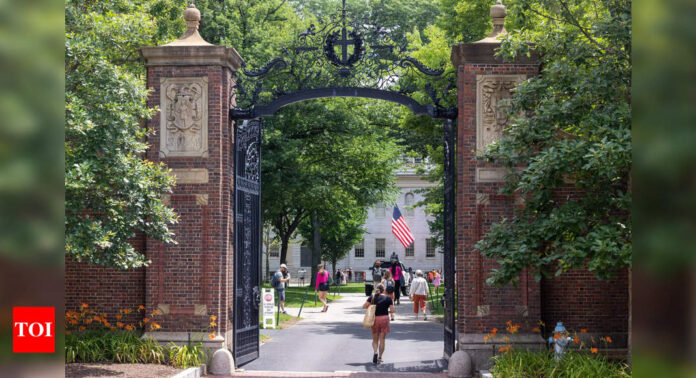In a notable shift in educational and immigration policy, the United States is actively seeking to increase the number of STEM (Science, Technology, Engineering, and Mathematics) students from India while limiting access for Chinese students to certain technological programs. This development was highlighted by deputy secretary of state Kurt Campbell during a recent discussion at the Council on Foreign Relations think-tank.
The big picture
The big picture
- Campbell said not enough Americans were studying science, technology, engineering and mathematics.
- Campbell emphasized the critical need for more international students in STEM fields due to the insufficient number of Americans pursuing these disciplines.
- He pointed out that while historically, Chinese students have constituted the largest group of foreign students in the US, the current geopolitical climate necessitates a strategic pivot.
Why it matters
- The US aims to foster its academic and security partnership with India by recruiting more Indian students for technology and related fields, as opposed to their Chinese counterparts.
- Security concerns have been central to this shift. US universities have been limiting Chinese students’ access to sensitive technologies, reflecting broader apprehensions about espionage and intellectual property theft.
- While Campbell acknowledged the need to maintain some academic links with China, he blamed Beijing for making it challenging to sustain these connections. He also noted the wariness among foreign executives and philanthropists about long-term stays in China due to security concerns.
- India has surpassed China to become the largest source of graduate students in US.
What they’re saying:
- “I would like to see more Chinese students coming to the United States to study humanities and social sciences, not particle physics,” Campbell said.
- He noted that US universities are cautious about the labs and activities Chinese students are involved in due to security concerns.
- Campbell emphasized that while China is often seen as a crucial source for
STEM students , the US should focus on attracting more students from India.
Zoom in
- Last week, former President
Donald Trump also weighed in on the topic of international students during a recent podcast. He suggested that foreign students who graduate from US colleges should automatically receive green cards, a significant departure from his usual hardline immigration stance. - This proposal, announced during a podcast with Silicon Valley tech investors, aims to retain high-skilled graduates in the US workforce, particularly from countries like India and China
- “You graduate from a college, I think you should get automatically as part of your diploma a
green card to be able to stay in this country and that includes junior colleges too,” Trump said. - Donald Trump, in his 2024 presidential campaign, has made immigration a central focus. However, his recent proposal to grant green cards to a substantial number of international graduates marks a significant departure from his typical stance on foreign nationals. This move would entail a considerable broadening of the U.S. immigration system.
- The potential offering of green cards, which provide a route to American citizenship, to such a large group of foreign graduates stands in stark contrast to Trump’s usual rhetoric surrounding immigration. This shift in policy could have far-reaching implications for the country’s approach to welcoming individuals from abroad.
What next
- This policy direction has stirred debates within academia and civil society. Critics argue that deteriorating US-China relations and heightened scrutiny have derailed scientific cooperation .
- The US is expected to continue balancing the need for international talent with national security concerns. The success of this strategy will depend on effectively managing the recruitment and retention of STEM students from India while maintaining vigilance over technological programs involving Chinese students.
(With inputs from agencies)

